A War of Firsts
Beginnings of a World War
Chemical warfare, tanks, aviation warfare, guide dogs… these and other elements of war made their first appearance in The Great War.
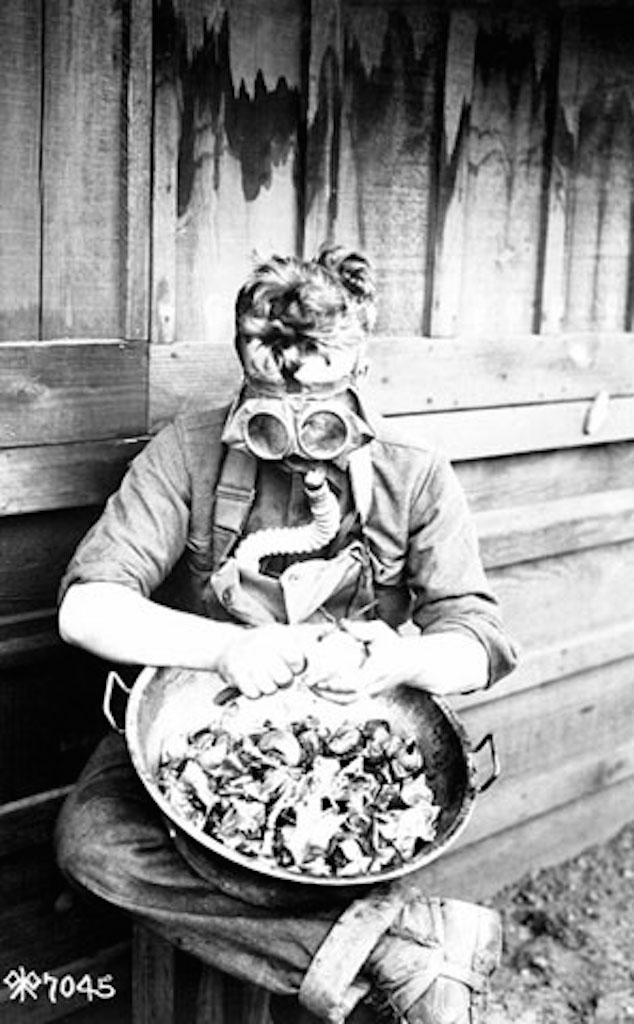
Chemical Warfare
Chemicals have been employed in warfare for centuries, the oldest example being poison–tipped arrows and darts. But it was during World War I that toxic chemicals gained their reputation as weapons of mass destruction.
The first battlefield use of a gas was in August 1914, when the French used tear–gas grenades against the Germans. While not usually lethal in its application, it incapacitated the enemy and soon both sides were using tear–gas as a weapon. However, where tear–gas is an irritant, chlorine gas is a poison and on April 22, 1915, the Germans unleashed it upon the allied trenches at Ypres, Belgium. Catching the Allies by surprise, the toxic cloud killed over 1,000 soldiers and wounded about 4,000 more. It was the first successful use of a lethal chemical weapon on the battlefield and opened the floodgates of a new and deadly form of warfare. Soon both the Allies and the Central Powers were scrambling to develop and produce effective means of deploying and defending against poison gas attacks.
By the end of the war, gas attacks had become common and their effectiveness had been reduced. However, the horrors of chemical warfare remained and in 1925, after the Armistice, gas weapons were outlawed.
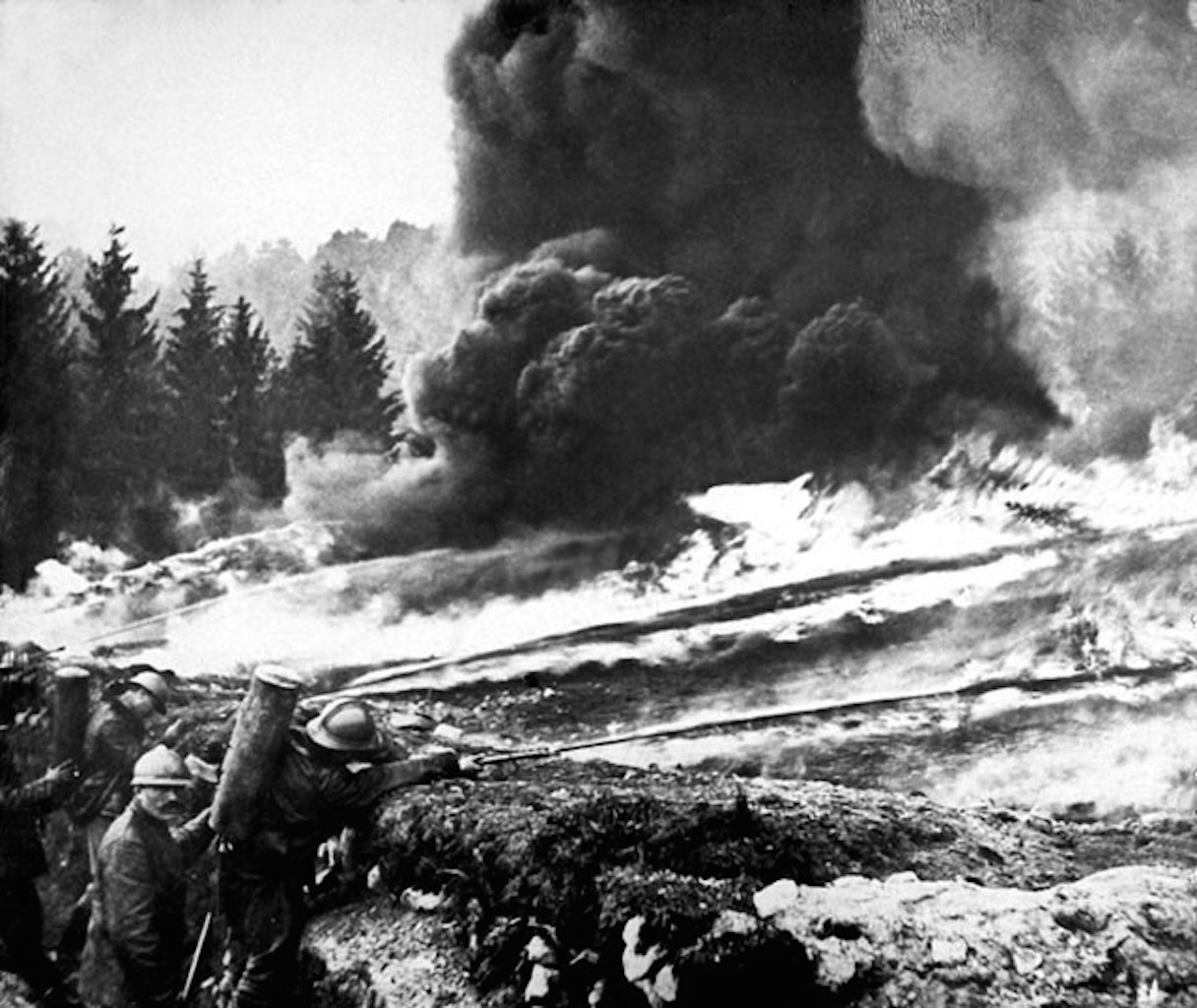
Flamethrowers
Of all the weapons introduced during the war, the flamethrower was one of the most feared. First used by the German shock troops, the weapon proved to be an effective tool against fortifications and trenches, showering the enemy with burning liquid and flushing out troops who would be otherwise unassailable.
The flamethrower was as much a psychological weapon as it was a physical one. The fear of burning to death and watching others be consumed in flames was mentally scarring to soldiers. Though many feel that this short range yet powerful weapon should be banned, the flamethrower remains a significant component of today’s military assets.

Steel Helmets
At the beginning of World War I, most combatants wore cloth or leather caps. While these types of headgear were sufficient for saber warfare, they provided no protection from shrapnel.
In the summer of 1915 the French introduced the Adrian helmet, a steel skullcap which required several pieces to form. Shortly thereafter, Englishman John Leopold Brodie developed a helmet made from one piece thus making it stronger and easier to manufacture. The Brodie helmet was often called the shrapnel net, Tommy helmet, Tin Hat, and the doughboy helmet. Brodie helmets were used until recently.
At the same time, the Germans first produced a metal helmet called Stalhelm, (“steel helmet”), originally designed by Dr. Fredrich Schwerd.

Tanks — British tadpole tank pictured
The development of trench warfare provided new obstacles in warfare. The heavy fortifications of the enemy trenches, coupled with the mire and obstacles of No–Man’s–Land, made an advance on foot dangerous and almost ludicrous. Advancing troops needed portable fortifications and ways to defeat the shells and traps around the trenches. The solution was the creation of "Land Ships" later codenamed "Tanks," by the workers building the machines which they thought looked like huge water tanks.
Winston Churchill felt that the use of tanks was too important to be discarded and his influence ultimately formed the Landship Committee tasked with developing an armored vehicle capable of 4 mph, climbing a 5 foot parapet, crossing an 8 foot gap, and carrying an armament of machine guns and a light artillery piece. The result was the rhomboid–shaped Mark I tank. Its unique configuration, along with its caterpillar tracks, allowed it remarkable mobility in difficult terrain.
The Mark I was first fielded during the Battle of the Somme in 1916. While many broke down, a good deal of them penetrated the enemy lines. They sheltered the advancing troops, smashed through barbed wire, crossed impassable terrain, and harried the enemy with their guns. They worked, and the lessons learned from their successes and failures lead to more life–saving innovations in armored vehicles.
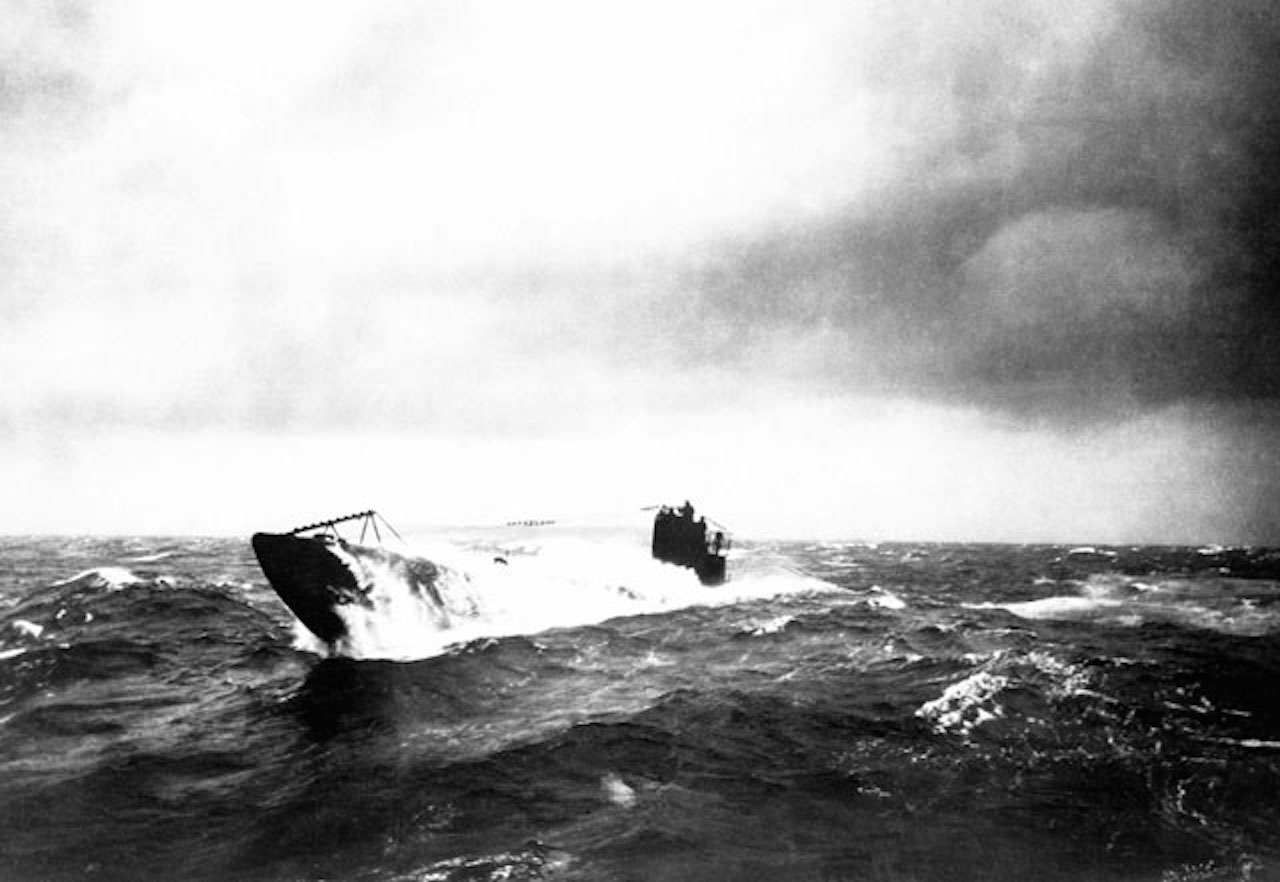
Naval Warfare
Before the Great War, naval warfare was limited almost exclusively to the surface of the sea. But this global conflict introduced the maritime equivalent of guerrilla warfare: submarines. Using the new torpedo as its primary weapon, submarines brought a deadly level of stealth to the high seas in that they could function both above and below the water and could fire on a target without warning. The German U–boat fleet became infamous for its indiscriminant destruction of any enemy ships they encountered, military or merchant.
World War I also saw the introduction of what was then called the Dreadnought Battleship. Though they didn’t play a decisive role during the war, the design and construction of these powerful warships led to a worldwide naval arms race to see who could create the most powerful battleship. By the end of the war, the dreadnoughts had only seen one major confrontation against each other in the Battle of Jutland, but they had set the new navel standard.
The dreadnought would eventually be replaced by another vessel developed during the war: the aircraft carrier. As the airplane was developed and improved, daredevils and inventors began pushing the limits. Prior to the war, Eugene Ely accomplished the first airplane takeoff from the deck of a navy ship, followed by the first successful onboard landing the subsequent year. Eventually, the HMS Ark Royal (a converted merchant ship) was commissioned as the first modern aircraft carrier.
- The Oxford Companion to American Military History
- wikipedia.org: Naval Warfare of World War I
- firstworldwar.com: Naval Warfare
- naval-history.net
- gwpda.org
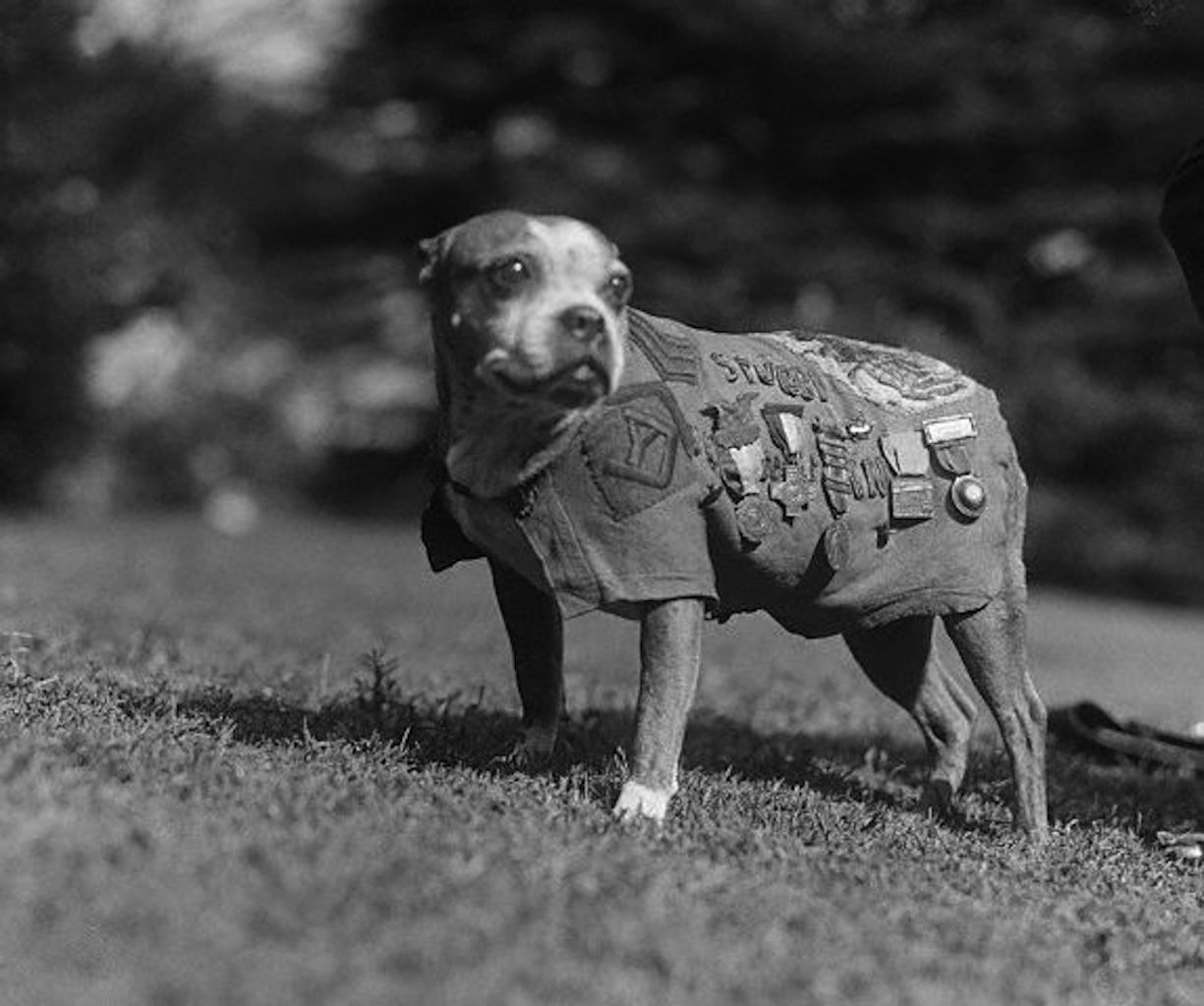
Guide Dogs — Sgt. Stubby pictured
World War I saw dogs used extensively and in a variety of roles. For example:
- Sentry Dogs — Accompanied a sentry and indicated danger by growling.
- Scout Dogs — Similar to sentry dogs, but walked ahead of the soldier to identify intruders.
- Casualty or Mercy Dogs — Carried first aid supplies around neck so injured soldiers could perform basic first aid on themselves while awaiting human help. For those mortally injured, the dogs offered companionship while the man waited to die.
- Messenger dogs — Dogs were faster than humans, were a smaller target, and could cover any terrain.
- Mascot Dogs — Similar to mercy dogs, mascots provided a reminder of the comforts of home to men in horrendous situations.
During the war, the Germans used 30,000 dogs while Great Britain, France and Belgium used over 20,000 and Italy only 3,000. Ironically, although the United States used few dogs, they produced the most famous and highly ranked dog, Sergeant Stubby. Stubby suffered several gas attacks, which sensitized his nose to the odor allowing him to alert his soldiers to gas before they could smell it. He also excelled at warning his unit of enemy attacks and even caught a German spy before he could escape with information. For these and other deeds, he was declared a hero.
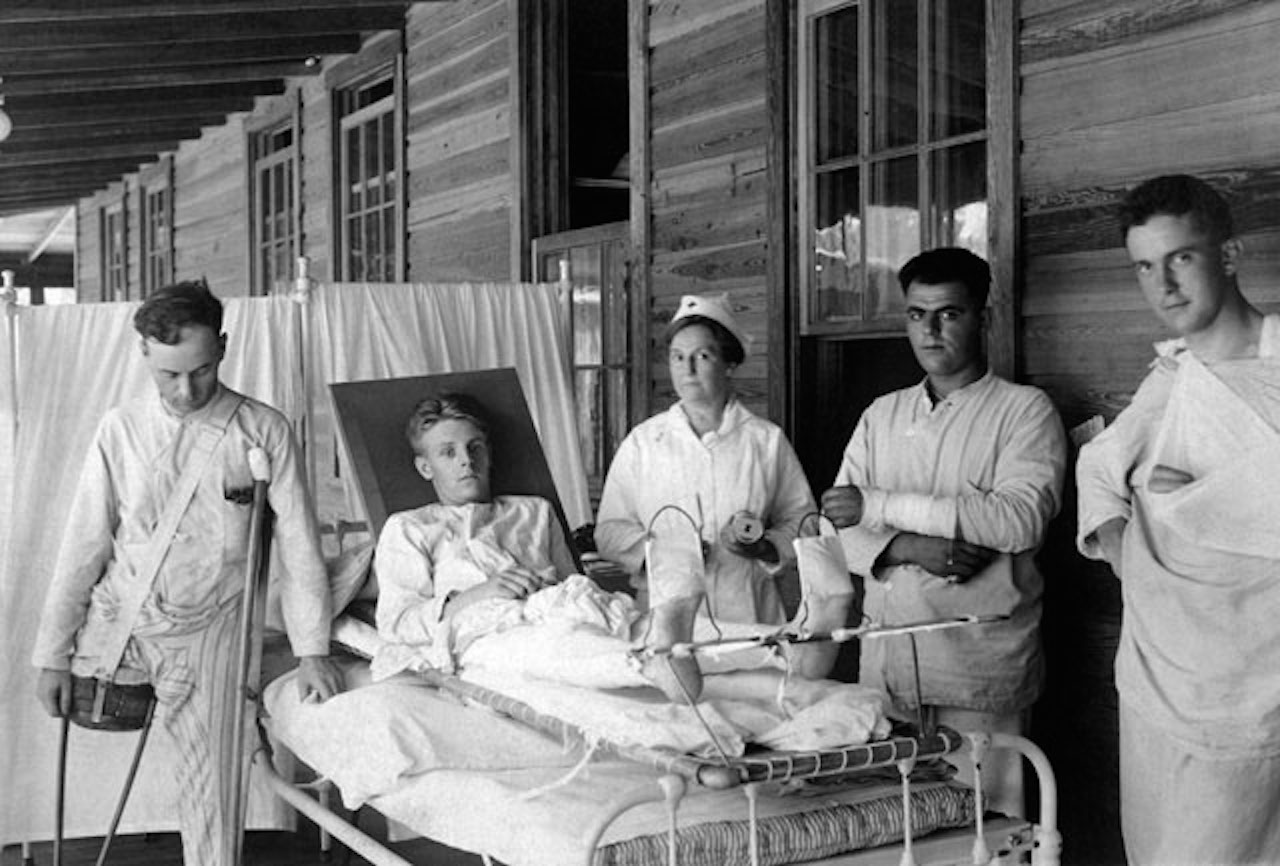
Blood Banks
Blood banks were initially established to provide transfusions for wounded soldiers. The earliest transfusion was done in 1492 by mouth. It was not until World War I that several physician–researchers found a way to preserve blood. It was called the Locke’s Solution, a salt and dextrose solution that prevented blood from clotting. Initially blood banks were called ice chests.

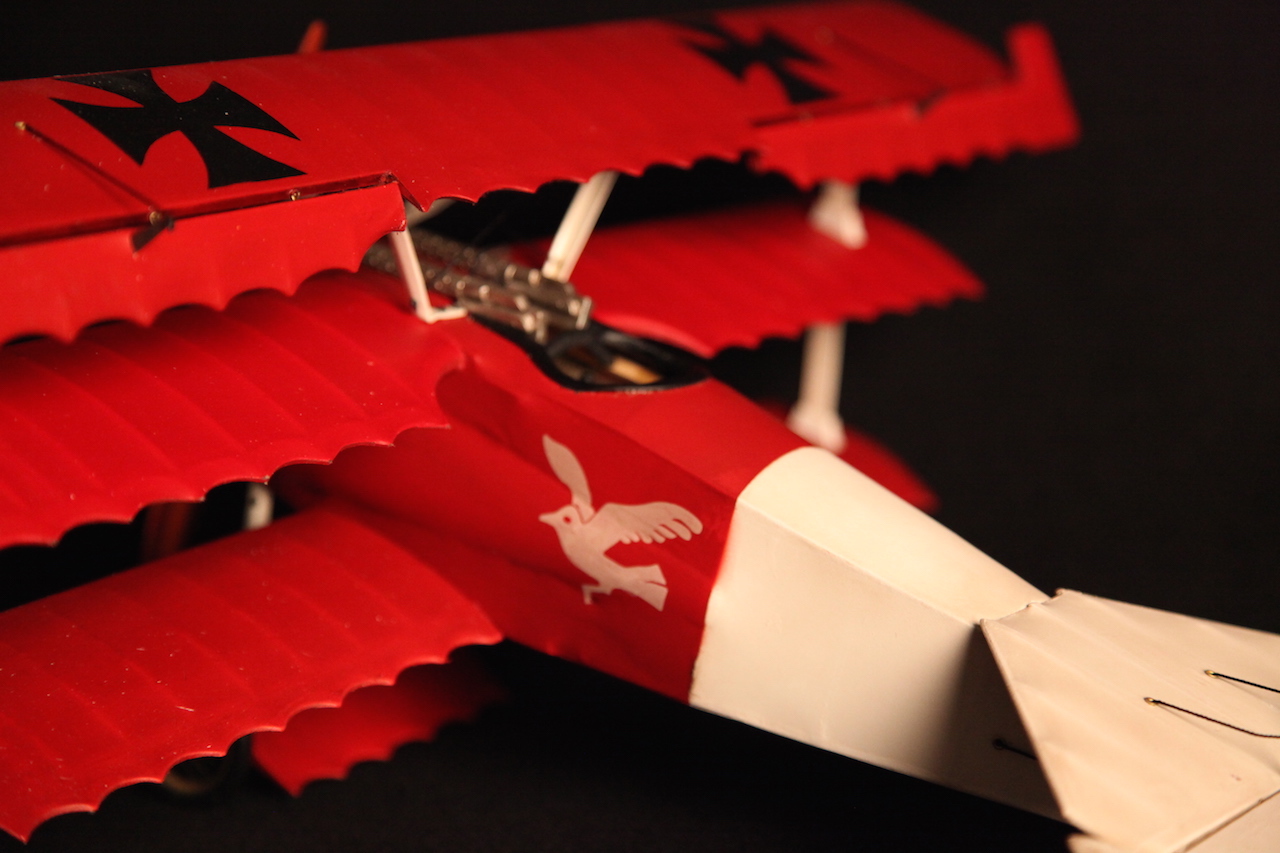

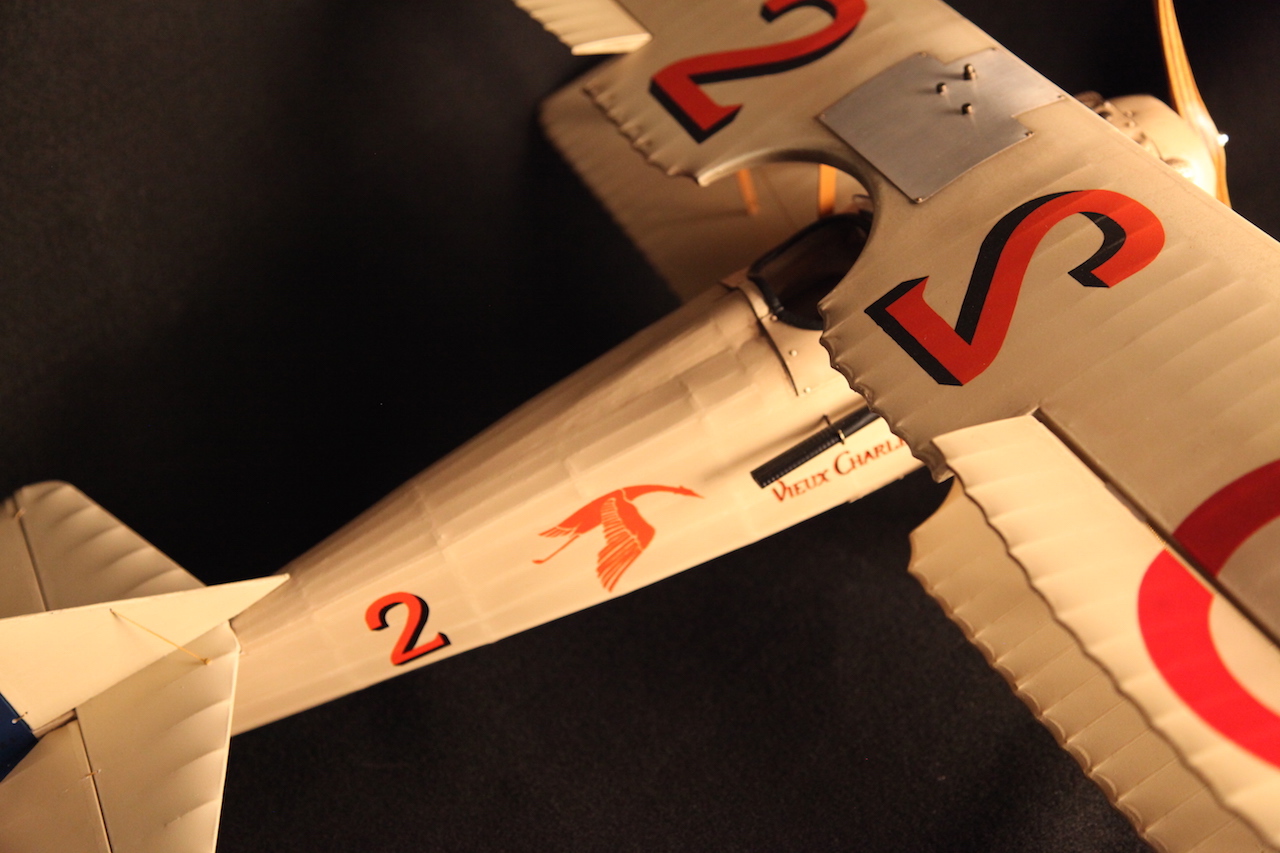

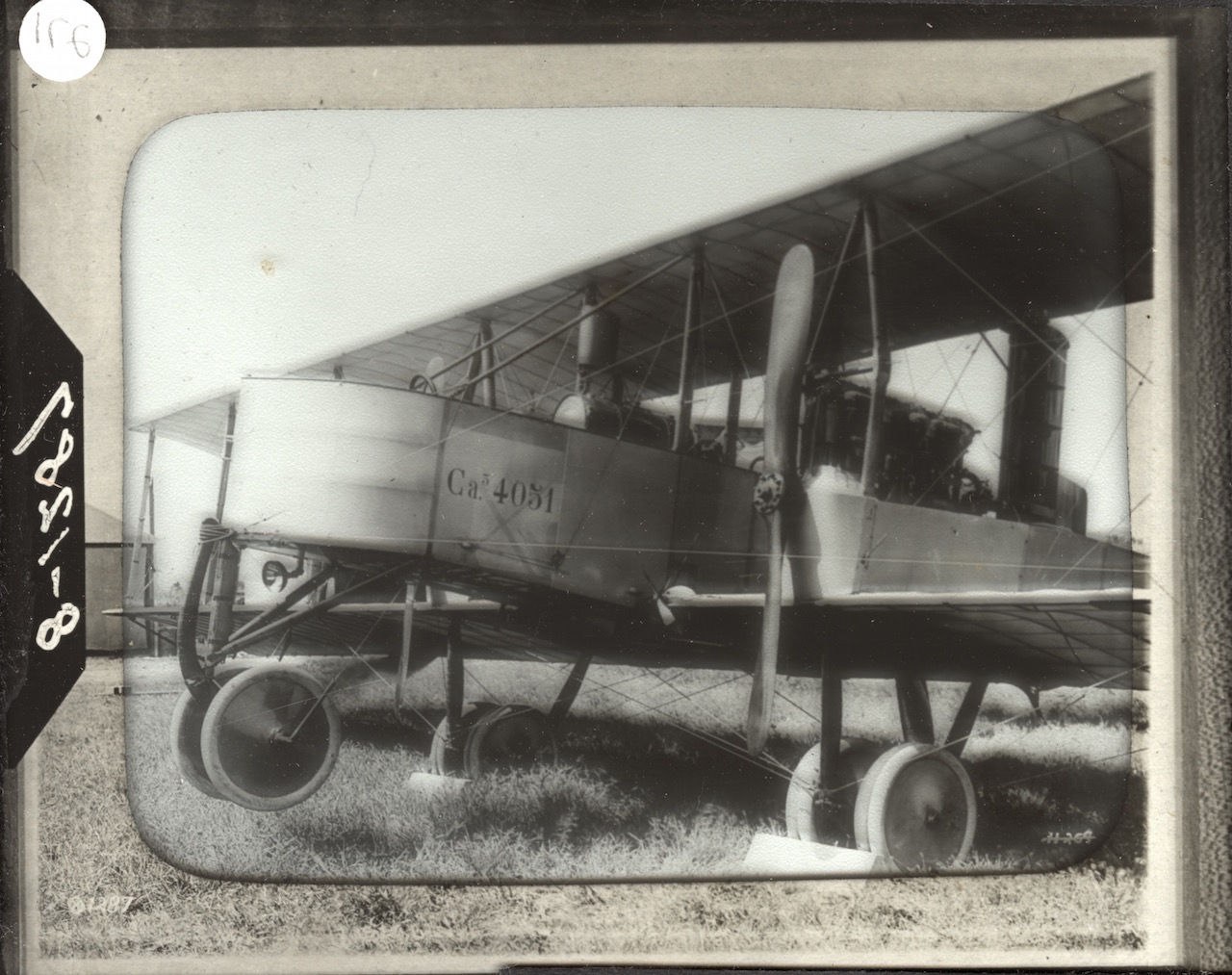
Aviation Warfare
The airplane began its career in World War I as an observation and reconnaissance vehicle. Provided the aircraft could return to base safely, these mobile “eyes in the sky” made it almost impossible to move large armies without detection and eliminated much of the element of surprise once enjoyed in wartime strategy. Then, too, there were the huge airships or dirigibles which towered over London during the later half of the war.
As rival pilots met in the air, their interactions started out as simple waves and hails, but degenerated to throwing bricks, grenades, rope and other flotsam to hinder or end the rival’s flight. This escalated to the use of personal firearms and eventually resulted in the installation of machine guns. Consequently, the weight and strain of the weaponry required more powerful aircraft capable of carrying the guns effectively and safely.
In addition, the positioning of the gun and propeller was a major issue since the former could easily destroy the latter if fired through. This problem was solved by the development of a synchronizing device that allowed the bullets of the gun to pass between the revolving blades of the propeller. This and many other innovations helped to refine the airplane and turn it from a gimmicky novelty into a formidable weapon.
Displayed above are two representative World War I model airplanes. The SPAD S.XIII, a single engine biplane operated by nearly 20 countries, was notable for its speed and strength in a dive but was difficult to maneuver at low speeds. The Fokker Dr.I triplane became renowned as the plane in which Manfred von Richthofen (known widely as the “Red Baron”) gained his last 19 victories, and in which he was killed on April 21, 1918.
- usaww1.com, United States Air Service
- overthefront.com, Over the Front
- “Aerial Reconnaissance in World War I”. U.S. Centennial of Flight Commission
- century–of–flight.net
- wikipedia.org: Aviation in World War I


